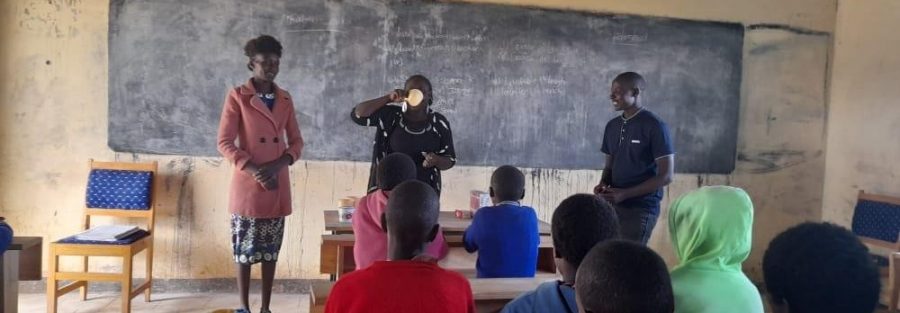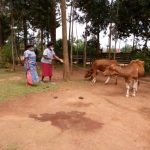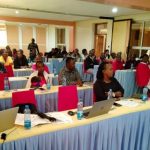Weekly iron and folic acid supplementation (WIFAS) is one of the evidence-based high impact nutrition interventions that is recommended by the World Health Organization (WHO) as a pre-conception service that should reach vulnerable adolescent girls to address anaemia and its effects. Anaemia in adolescence may cause a wide range of functional consequences across the life course, including reduced resistance to infection, impaired physical performance and neurodevelopment, and suboptimal schooling outcomes.
According to the Kenya National Micronutrient Survey of 2011, the prevalence of anaemia was highest in pregnant women (41.6 per cent), followed by children 6–59 months (26.3 per cent) and school–age children (5–14 years) at 16.5 per cent. The prevalence of iron deficiency was 21.8 per cent, 9.4 per cent and 36.1 per cent in the same groups respectively. The prevalence of other types of nutritional anaemia, such as folic acid and vitamin B12 deficiency, was at 31.5 per cent and 47.7 per cent respectively among non-pregnant women aged 15–19 years.
The context within which WIFAS can be administered as a blanket intervention to prevent anaemia among adolescents is where anaemia among pregnant women is above 40% which is Kenya’s current context. A recent 2019 Adolescent Health Survey revealed that more than half (65.5%) of adolescents had inadequate individual dietary diversity scores. Samburu county has not been spared from poor diet diversity with additional low iron-rich intake among its adolescents, a situation that predisposes them to the risk of anaemia and its devastating effects. The individual dietary diversity scores (IDDS) among adolescents was low at 42.9% with girls having much lower IDDS of 33.5% compared to boys at 52%. Iron intake for adolescent girls seemed high at close to 80% though this was mainly from plant-based sources, with non-haem iron whose bio-availability is highly determined by food preparation methods. The frequency of intake of animal protein foods, which are good sources of haem iron is grossly low among adolescents – once in a week.
It is for these reasons that WIFAS was included as one of the core interventions within the UNICEF-funded 21-month Adolescent Biotisho Integrated Nutrition Project to help contribute to improved nutrition status among adolescent girls in the county. It was implemented amongst other interventions that promote production of diverse food crops through kitchen/school gardens and also intake of a diverse diet with iron-rich foods using locally available foods.
Though micronutrient supplementation is a core intervention within the country and Samburu County nutrition action plans, there is presently no national policy on WIFAS for adolescent girls. The main reason for this is because the iron and folic acid formulation that is recommended for WIFAS as per WHO guideline (60mg iron, 2.8mg folic acid) is not available in the country or globally. The countries1 that have adopted this intervention have opted to use the current IFAS formulation (60mg iron, 4mg folic acid) that is normally used for pregnant women.
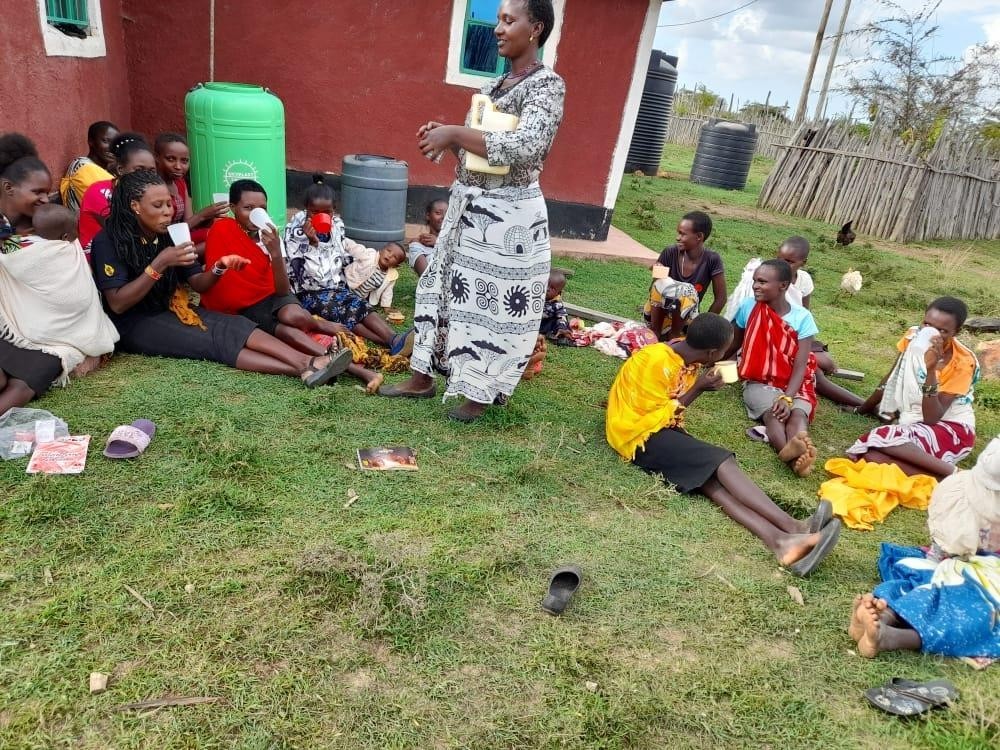
Evidence from these countries scale-up of WIFAS has showed significant reduction in anaemia levels among adolescent girls and boys.
At the start of the Biotisho Project, though WIFAS was included in the minimum package of interventions to be provided to the targeted adolescents in the project implementation areas, the Department of Health representatives felt it was critical for a national policy to first be in place before the County could adopt the intervention.
CBCC Africa representing Biotisho Project then embarked on an advocacy campaign to lobby for the implementation of WIFAS as a pilot initiative in the County with the intention of reducing risk of anaemia among the Samburu girls in light of the poor dietary diversity and low-intake of haem iron foods.
Advocacy Process and Tactics
- In late 2020, the Biotisho project implementing agency, CBCC Africa requested the Head of the Division of Nutrition and Dietetics (DND) of the Ministry of Health to convene an adolescent partner meeting. The objective of the meeting was to get guidance from the policy makers at national level on WIFAS policy and programming for partners who wanted to scale up the intervention. The meeting was an opportunity to hear experiences from Nutrition International and selected Counties that had implemented WIFAS and Nutrition Education targeting in- school adolescents in a pilot study. The decision from the meeting was for this discussion to be spearheaded by the Micronutrient TWG where the IFAS Task Force operated.
- In early 2021, CBCC Africa, representing Biotisho Project, sent representatives to join the Micronutrient TWG of the Division of Nutrition and Dietetics. CBCC Africa representative joined forces with Nutrition International to request for action surrounding policy direction on WIFAS for the country. The two organizations worked on a policy brief under the IFAS Taskforce and this brief was shared with the Micronutrient Program Manager for subsequent presentation to the leadership of DND. The policy brief was intended to request the policy makers, as an IMMEDIATE ACTION, to allow use of the current formulation of 60mg iron/0.4mg folic acid (that is currently available in health facilities for use by pregnant women) to be used in supplementing adolescent girls on a weekly basis. Though the currently available formulation has less folic acid than is recommended in the WHO guidelines (2.8mg), evidence from various clinical trials in other countries indicate the value of using the 60mg iron/0.4mg folic acid formulation as it helps to significantly reduce risk of anaemia among girls.
- CBCC Africa made an additional interim request to the Head of DND, for a circular letter sanctioning the implementation of WIFAS within the context of operational pilot projects, such as the UNICEF-funded Adolescent Biotisho Integrated Nutrition Project in Samburu. Unfortunately, this was stalled owing to the persistent issue of lack of the ideal dosage for WIFAS which has higher content of folic acid, that is 2.8mg compared to 0.4mg in the current IFAS formulation that is available in the country (and that is used for supplementing pregnant women in health facilities). A decision was made by HNDU to firstly have a formal confirmation from WHO concerning the unavailability of the correct formulation and its source manufacturing company.
- In mid-2021, WHO and UNICEF representatives in-country requested a meeting with the leadership of DND and adolescent program implementing partners to give final guidance on WIFAS based on global policies. The confirmation from the meeting from WHO was that the current available formulation for IFAS (60mg iron/0.4mg folic acid) is allowable for adolescent girls. They also ascertained that presently, there is no known manufacturer of the correct WIFAS formulation (60mg iron/2.8mg folic acid). Other countries are also using the lower dosage IFAS formulation to supplement the adolescent girls.
- In early 2022, the Biotisho Project got a go-ahead from acting head of HNDU to mirror the strategy used by Nutrition International to roll-out WIFAS in counties on the basis of the specific county government’s decision to implement the initiative. The counties that had previously scaled up WIFAS did so on the basis of their poor status of anaemia levels, low dietary intake of iron among targeted cohort, their previous experience implementing WIFAS and more importantly, the positive benefits on the targeted girls’ well-being.
- Key considerations for WIFAS adoption in counties was where the anaemia prevalence is high or where dietary diversity is poor, particularly low in iron rich foods. This is Samburu County’s context based on 2019 Adolescent Health Survey and the 2020 Biotisho Baseline Nutrition.
- A key advocacy tactic was then used to motivate Samburu County Department of Health to adopt WIFAS. CBCC Africa team reached out to the County Nutrition Coordinator (CNC) and requested for a special County Health Management Team (CHMT). This meeting was an avenue for the Samburu health decision makers to hear the experiences from Busia and Nakuru County Nutrition Coordinators on how their respective county governments committed to finance and scale up the impactful WIFAS. The virtual meeting enabled the attending Samburu CHMT to share their fears and ask questions linked to issues of sustainability, impact of program, modalities of operationalizing in schools and community platforms, among others. From the brainstorming session, consensus was drawn among the CHMT members that the initiative could be piloted in the areas where the Biotisho Project had already invested in training service providers and where other nutrition specific and sensitive activities were being implemented, such as, school gardening, nutrition education and WASH promotion.
- In January 2022, Samburu county government, through the department of health agreed to implement WIFAS targeting the whole county but starting with a pilot phase of Biotisho implementation sites, that included Loosuk and Suguta.
- In February 2022, with support from Biotisho project, a County-level WIFAS Quantification Meeting was held. The core facilitators of the meeting were the CNC and the County pharmacist. During this meeting, a commitment was made for procurement and supply of the IFAS supplements within the County procurement budget for the selected implementation sites in Samburu Central Sub County. The task for the Biotisho implementing team was for provision of actual numbers of adolescent girls from the 4 primary schools and 10 out-of-school adolescent girl This would help with accurate quantification before roll-out of the program.

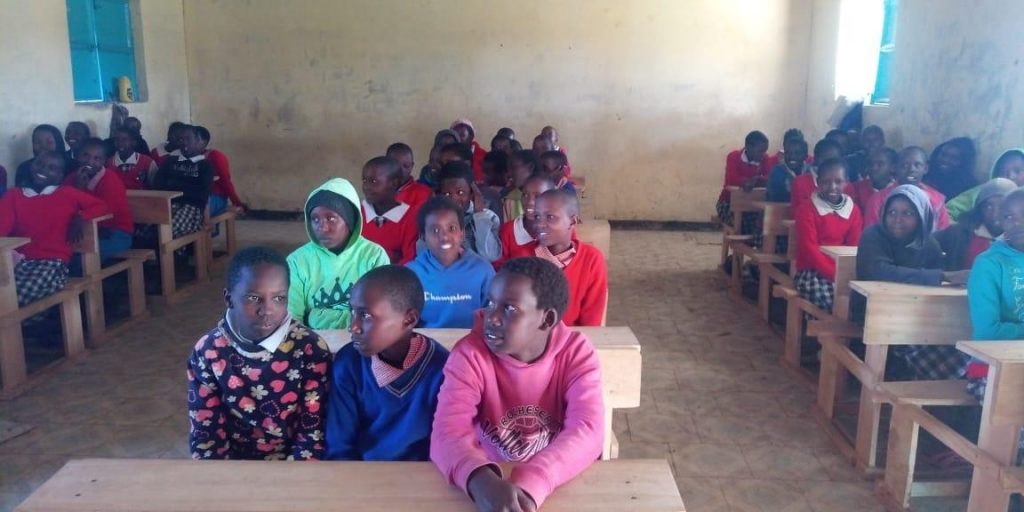
Results of the Practice
- In March 2022, CBCC Africa made a formal written request to the County Director of Promotive and Preventive Health for the written approval of WIFAS roll-out in the Biotisho Implementation Schools, Health Facilities and Community Platforms. This approval was given in early April upon which the County Pharmacists then gave authorization to Suguta and Loosuk Health Centres to provide IFAS supplements to be used in the outreach The Community Health Assistants (CHAs) and Public Health Officers (PHOs) from these health facilities then embarked on training the girl-based out-of-school peer groups and distributing the WIFAS tablets. These tablets were taken in the presence of the service providers to ensure compliance. The girls were also provided with water and a snack in accordance with guidance on intake of WIFAS with food to avoid side effects.
- In May 2022, once the primary schools were re-opened following the long school holiday (March-April), the Biotisho implementing team did a sensitization of the school teachers and female students (Grade 4-8) on the importance of WIFAS. The schools identified a day each week that would be the WIFAS day when the targeted girls would take a WIFAS tablet in the presence of their teachers. So far, over 1200 girls have been reached with WIFAS from both school and community-based platforms.
- In May 2022, a community-level advocacy meeting was held by the integrated team of Biotisho implementing partners with community gatekeepers (chiefs, elders, Nyumba Kumi heads, ward administrators) from Loosuk and Suguta wards to sensitize them on the WIFAS This meeting was intended to allay any fears linked to WIFAS that the community gatekeepers had. The county departmental managers facilitated the sessions with a focus on highlighting the importance of adolescent nutrition and WIFAS. The community gatekeepers promised to embrace the intervention and to mobilize their community members in support of the WIFAS initiative that was being rolled out in schools and community groups.
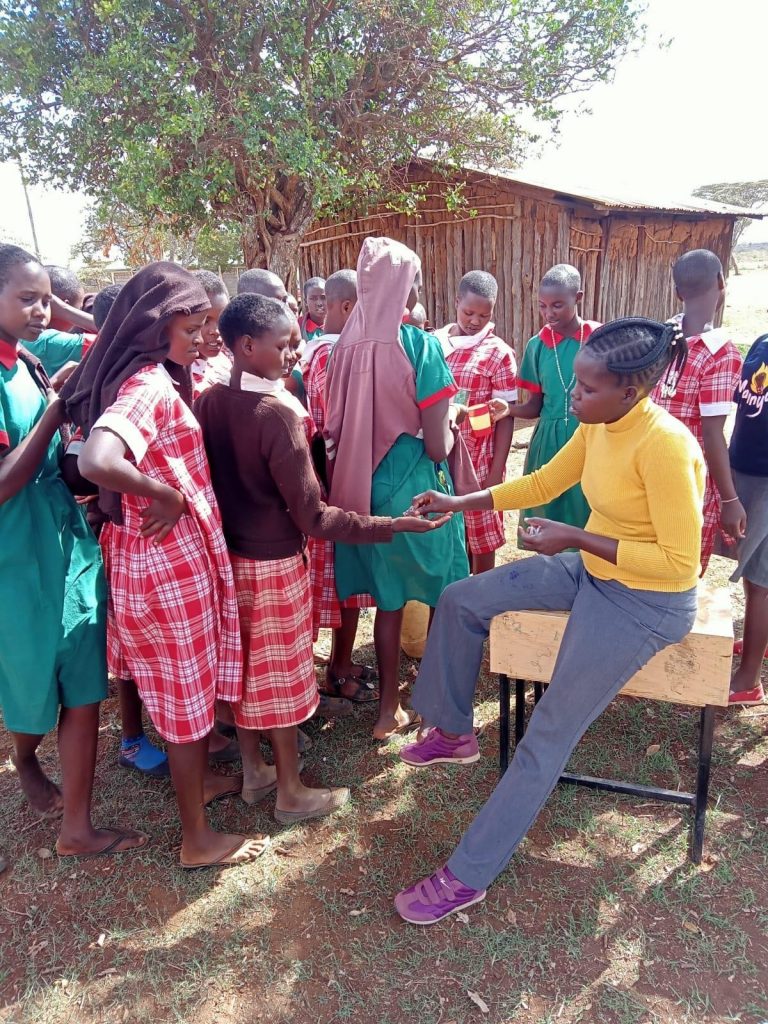
Lessons Learnt
Any advocacy effort intended to shift or seek adoption of specific policies or programmes takes time and demands for patience so that the process ends with positive results. Because barriers will always emerge towards the intended policy shift or adoption, one needs to be flexible in changing the advocacy approaches or tactics. In most cases, advocacy calls for a deep understanding of the values of the policy maker/decision maker and to adapt to these values.
What worked
For the Biotisho team in successfully motivating Samburu County Government to adopt the WIFAS intervention was the good relationship that had been built over a course of years by CBCC Africa team with key county government representatives.
What worked
For the Biotisho team in successfully motivating Samburu County Government to adopt the WIFAS intervention was the good relationship that had been built over a course of years by CBCC Africa team with key county government representatives.
What did not work?
Lobbying for a national-level policy statement authorizing the use of the available IFAS formulation of 60mg iron/0.4mg folic acid for the weekly supplementation of adolescent girls in the country.
At the national level, the actors are required to make policy decisions based on evidence, and at the time of the advocacy process, there was no concrete survey-based data indicating the high anaemia levels among adolescents in the country. The last country-level micronutrient survey was conducted in 2011 and the one planned for 2021 is yet to be conducted to inform decision such as blanket WIFAS supplementation. With health being devolved, the decision to adopt initiatives such as WIFAS are subsequently pegged on county-level data on anaemia levels among WRA, pregnant women or iron consumption, as was the case for Samburu County.
Conclusion
The adolescent girls within the Biotisho implementation sites have embraced WIFAS intake and though the intervention has only been in action for one month, it is anticipated to have great impact over the next 3 months on their energy levels and school concentration levels.

